30 Amazing Photos Capturing Life In The 1950s In America

The 1950s in America was a whirlwind of change, charm, and cultural awakening—a decade where tradition danced with transformation. It was a time when rock and roll exploded onto the scene, televisions became living room staples, and soda fountains buzzed with teenage dreams.
But beneath the surface of sock hops and suburban bliss, deeper stories were unfolding—stories of courage, resistance, and the fight for equality, as the Civil Rights Movement began to take powerful strides.
Through the lens of history, these years shimmer with both simplicity and seismic shifts. In this collection of 30 remarkable photographs, we travel through the heartbeat of a generation—capturing moments of joy, struggle, innovation, and everything in between.
Each image is more than just a picture; it’s a window into an era where the American spirit was tested, reshaped, and celebrated. So, let’s take this visual journey and uncover the defining snapshots of the fabulous, formative 1950s.
1. Korean War Begins (1950)

When the Korean War broke out in 1950, Uncle Sam didn’t hesitate to roll up his sleeves and dive into the fray to support South Korea. It was a time when bravery was the name of the game, and G.I. Joe became the poster child for courage. These young soldiers, with their helmets slightly askew and boots muddy from the Korean terrain, were everyday heroes.
Their mission was clear: stand up against the North’s aggression. They forged friendships thicker than their combat boots and faced challenges that would make even the bravest hearts tremble.
The war may have been half a world away, but its impact resonated in American living rooms, with families gathered around radios, their hearts synchronized in hope and prayers for the young men overseas. This decade marked a significant chapter where courage wrote its own story.
2. President Dwight D. Eisenhower Elected (1952)
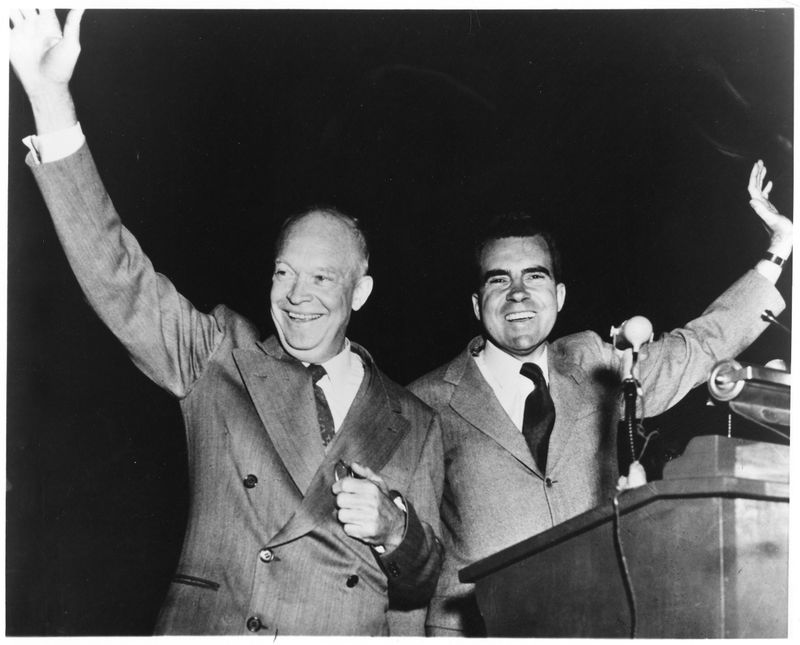
Eisenhower, the man with a military plan, marched his way from World War II hero to the Oval Office in 1952. His election was more than just a victory; it was a testament to the trust Americans placed in a steady hand to guide them through the post-war world.
With his charismatic grin and a reputation as a no-nonsense leader, Eisenhower embodied the spirit of a nation eager for peace and prosperity. The election rallies were spectacles of patriotism, with flags waving and ‘We like Ike’ buttons gleaming in the sun.
He wasn’t just a president; he was a beacon of hope for a brighter future. Under his leadership, America navigated the turbulent waters of the Cold War, and his legacy of integrity and determination left an indelible mark on the nation. His presidency was a time when leadership met legacy.
3. McCarthyism and the Red Scare
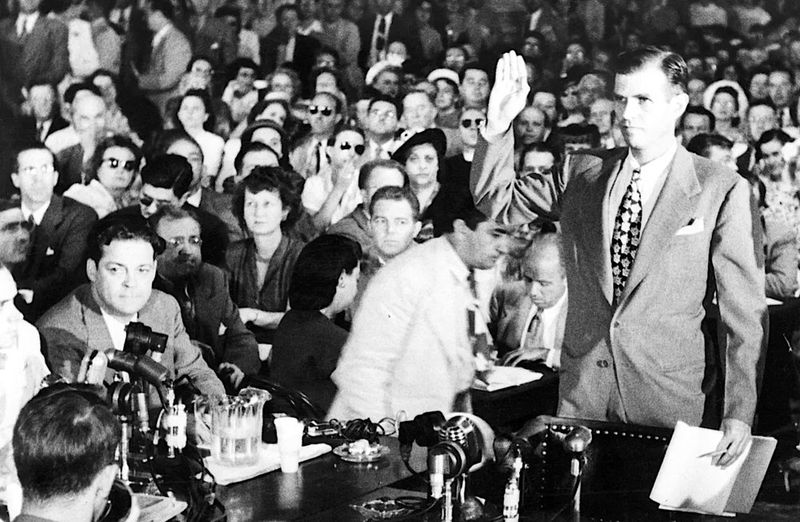
Senator Joseph McCarthy was the man of the hour, or perhaps, the man of paranoia, as the 1950s saw the rise of McCarthyism and the Red Scare. In the halls of Congress, he wielded accusations like a double-edged sword, slicing through reputations and careers in his quest to root out communism.
His hearings were less about facts and more about theatrics, a true Washington drama with McCarthy as the lead actor. The American public found themselves in a state of heightened suspicion, peering over their newspapers with a skeptical eye.
But as the curtains fell on his political career, McCarthyism left a lasting lesson: the fine line between vigilance and paranoia. The era was a stark reminder of the power of fear and the resilience of truth. In the end, the show was over, but the echoes of its impact lingered.
4. Brown v. Board of Education (1954)

In 1954, the Supreme Court dropped a legal bombshell with the Brown v. Board of Education decision, declaring school segregation unconstitutional. It was a monumental step towards equality, a ruling that resonated like a shot heard around the educational world.
For the African American children walking into integrated schools, it was more than just a new classroom; it was a doorway to opportunity. Their smiles lit up the future, as they carried the hopes of generations on their small shoulders.
This landmark case was more than legal jargon; it was the catalyst for the Civil Rights Movement, serving as a beacon of justice that illuminated the path toward equality. It was a time when the power of justice began to dismantle the walls of segregation, one classroom at a time, heralding a new dawn of civil rights.
5. CIA-Backed Coup in Iran (1953)

The CIA’s covert coup in Iran in 1953 was the kind of cloak-and-dagger adventure that spy novels are made of. The U.S. had its eyes set on overthrowing Prime Minister Mossadegh, and this mission was as secretive as a whisper in the wind.
In Tehran, the streets buzzed with political tension, while behind the scenes, American agents orchestrated a symphony of subterfuge. It was a high-stakes game of chess, played with cunning precision and international intrigue.
This operation was more than just geopolitical maneuvering; it was a prelude to decades of complex relations. The echoes of this coup would reverberate through history, reminding America of the intricate dance of foreign policy. It was a time when the lines between diplomacy and deception blurred in the desert sands.
6. Civil Rights Movement Gains Momentum
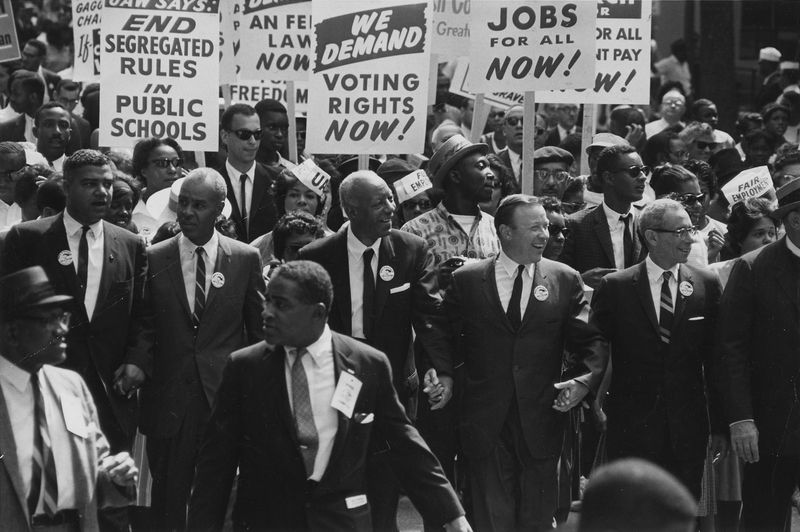
The 1950s were not just about sock hops and rock ‘n’ roll; they were also about the rising tide of the Civil Rights Movement. As activists like Rosa Parks and Martin Luther King Jr. emerged, so did the spirit of justice and equality.
The Montgomery Bus Boycott was more than a protest; it was a movement that put civil rights on the map, with every bus ride becoming a statement of defiance and determination. Americans from all walks of life joined in the march towards freedom.
With hope in their hearts and courage in their steps, the Civil Rights Movement brought the nation to a crossroads, challenging injustices and inspiring change. It was a time of powerful speeches and peaceful protests, turning the streets into stages of history, where equality took its rightful place center stage.
7. Interstate Highway Act (1956)
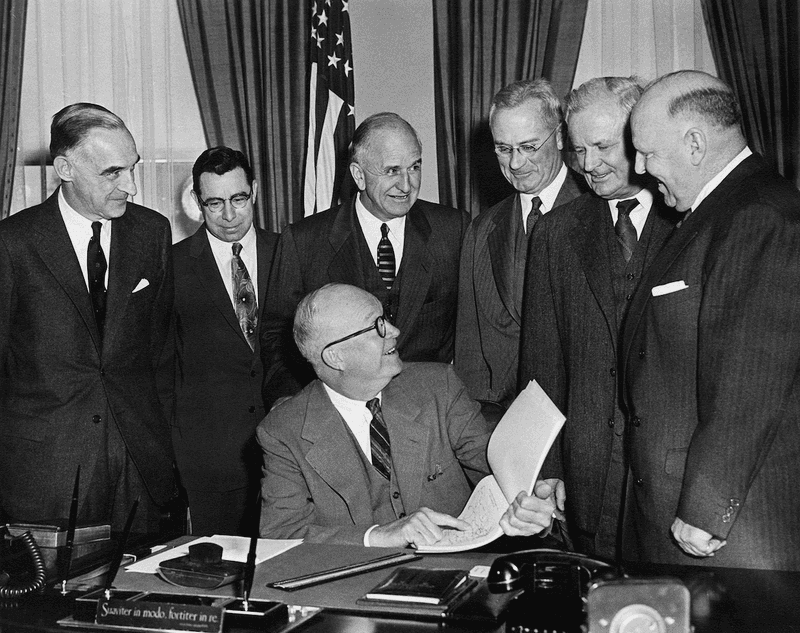
In 1956, President Eisenhower took the scenic route to modernization with the Interstate Highway Act, a plan that paved America coast-to-coast. It was a concrete commitment to connectivity, and the ignition key to a new era of transportation.
As bulldozers roared and workers donned hard hats, the nation witnessed the birth of an extensive highway network. This wasn’t just a road plan; it was the blueprint for the American Dream, connecting small towns to big cities, factories to front doors.
The highways became the arteries of commerce and adventure, fueling economic growth and family road trips alike. With every mile, the act transformed the landscape, weaving together the nation’s diverse tapestry with asphalt threads. It was a time when America hit the road, full speed ahead into the future.
8. Alaska and Hawaii Become U.S. States (1959)
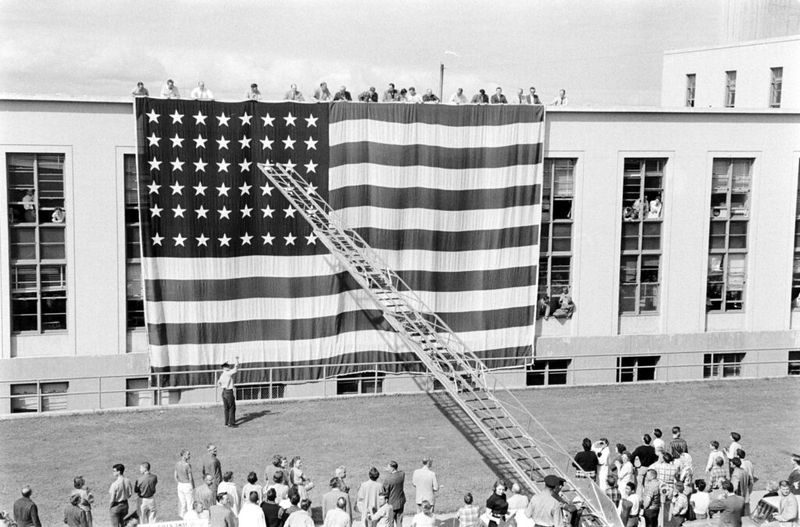
In 1959, Uncle Sam expanded his family tree by welcoming Alaska and Hawaii as the 49th and 50th states. It was a geographic growth spurt that put the ‘united’ in United States, adding a touch of the exotic and the icy to the national map.
For Alaska, it was a journey from the wild frontier to the stars on the flag. Meanwhile, Hawaii brought its island paradise vibes, turning the mainland a little more tropical, one hula dance at a time.
This expansion wasn’t just about adding stars and stripes; it was a celebration of diversity and unity. As the nation stretched from the frozen tundras to sandy beaches, it symbolized the boundless American spirit. It was a time when the U.S. embraced new horizons, literally and metaphorically.
9. U-2 Spy Plane Incident (1959)

In 1959, the skies over the USSR got an unexpected visitor—the U-2 spy plane, a high-flying testament to Cold War tensions. This wasn’t just airborne espionage; it was a game of aerial hide and seek with global stakes.
As the plane soared through hostile airspace, the mission was clear: gather intelligence while staying under the radar, quite literally. But when the USSR shot down the plane, it was more than just a crash; it was an international incident.
The U-2 incident brought the covert operations of the Cold War into the spotlight, escalating political tensions and fueling the arms race. It was a time when the skies held secrets, and each mission was a gamble in the complex chessboard of global politics.
10. Vietnam War Advisory Phase Begins
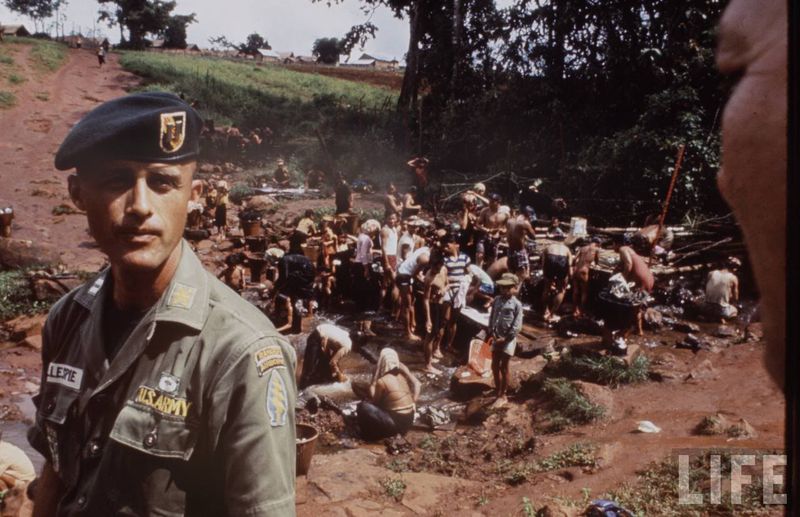
The late 1950s marked the beginning of a new chapter in Vietnam, as the U.S. sent military advisors to support South Vietnam. It was a period of strategic whispers and shadowy alliances, a prologue to a conflict that would soon engulf a nation.
These advisors, stationed in the dense jungles, were not just soldiers; they were the architects of military strategy, planting the seeds for a war that would redefine American foreign policy.
With each meeting and mission, the advisors played a critical role in the unfolding drama, setting the stage for a conflict that would capture the world’s attention. It was a time of quiet beginnings, where the footsteps of advisors would echo into a full-scale war. The advisory phase was the calm before the storm, and history was watching.
11. Elvis Presley Rises to Fame (Mid-1950s)

Ladies and gentlemen, Elvis has entered the building! The mid-1950s saw the meteoric rise of Elvis Presley, a hip-shaking, genre-defining icon who strummed his way into the hearts of millions. With a curl of his lip and a swivel of his hips, he turned the music scene upside down.
His performances weren’t just concerts; they were electrifying events, where fans went wild and parents raised eyebrows. Elvis’s voice was a symphony of rebellion, a soundtrack for a generation eager to break free from convention.
This rock ‘n’ roll revolution wasn’t just about music; it was a cultural shift, as Elvis became the poster boy for the era’s youthful exuberance and defiance. The King of Rock and Roll was more than an entertainer; he was a symbol of change, leaving an indelible mark on music and culture.
12. The Beat Generation
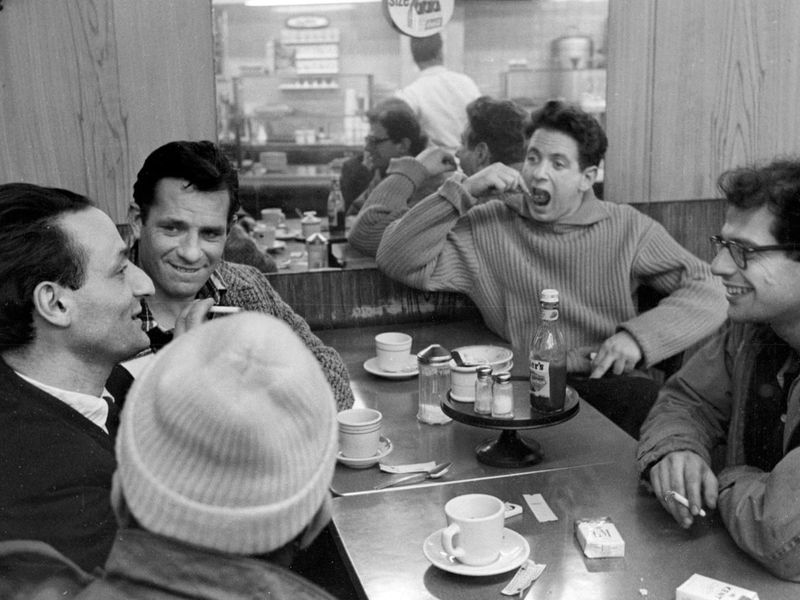
The Beat Generation was the literary jazz ensemble that played the soundtrack of the 1950s. Writers like Jack Kerouac and Allen Ginsberg weren’t just authors; they were the pioneers of a cultural revolution, challenging the status quo with every word.
In smoky coffeehouses and dimly lit apartments, these writers spun tales of travel, existential angst, and rebellion. Their works were the literary equivalent of a free-form jazz solo, improvisational and full of life.
The Beats inspired a generation to question, to explore, and to live life unscripted. With each poem and novel, they painted a portrait of a society on the brink of change, where conformity was the enemy and authenticity was king. The Beat Generation was more than a movement; it was a call to artistic arms.
13. Television Explodes in Popularity
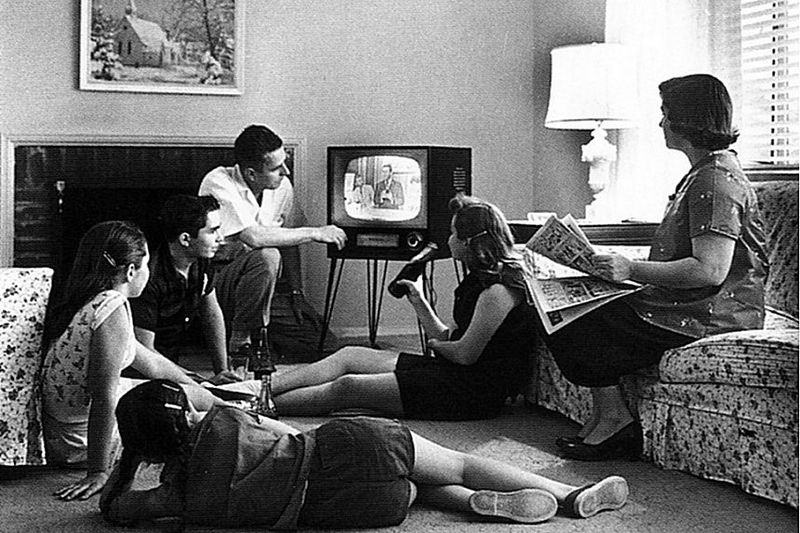
The 1950s was the decade television went from novelty to necessity, as families around America found themselves glued to their sets, laughing along with ‘I Love Lucy’ and gasping at ‘The Ed Sullivan Show.’
Dinner was often served with a side of TV trays, as the living room became the new gathering spot. Television’s allure wasn’t just in the flickering images; it was in its ability to bring the world into the home, one broadcast at a time.
From sitcoms to variety shows, this new medium changed the way Americans consumed entertainment, shaping culture and society in ways previously unimaginable. It was a time when the TV became a household fixture, and programming turned into a shared family experience, forever altering the landscape of leisure.
14. McDonald’s Opens First Franchise (1955)
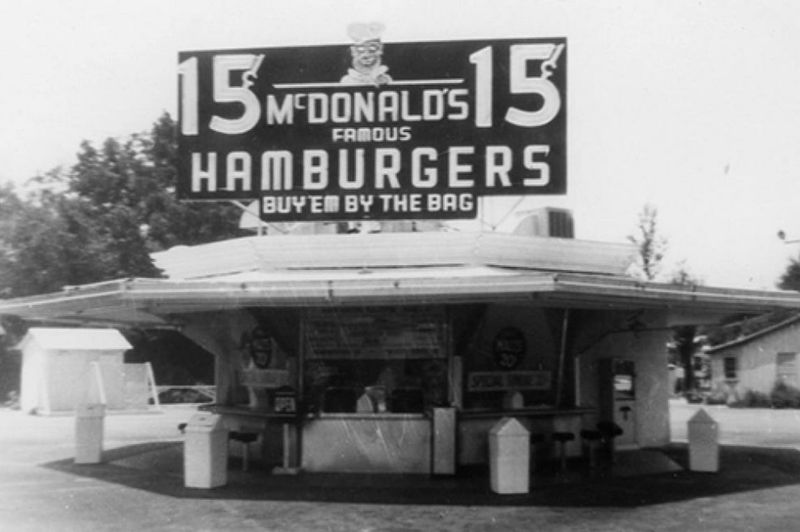
In 1955, a fast-food revolution was quietly served with a side of fries as McDonald’s opened its first franchise. It was the dawn of a new era, where burgers and shakes became the culinary cornerstone of American life.
The golden arches were more than just a logo; they were a beacon of consistency, offering a taste of Americana with every bite. Families flocked to the restaurant, their cars lining up like clockwork at the drive-in.
McDonald’s wasn’t just selling food; it was selling an experience, a convenient and tasty slice of the American Dream. This franchise model would become a template for success, spreading across the globe and forever altering the way the world dined. It was a time when fast food became a cultural staple, one burger at a time.
15. Rock and Roll Becomes Mainstream
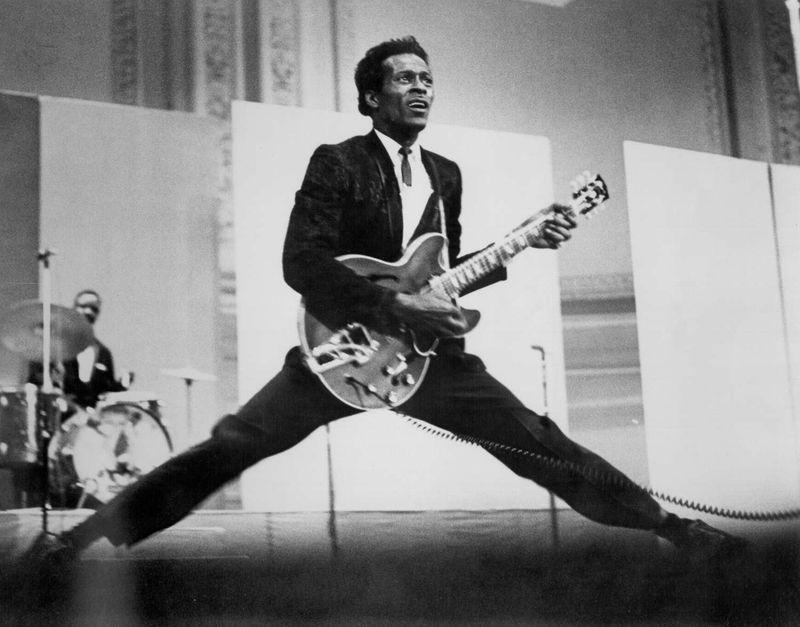
Rock and roll burst onto the scene in the 1950s like a rebel with a cause. Chuck Berry, Little Richard, and Buddy Holly were the pied pipers of this musical revolution, turning up the volume on a new cultural era.
Teenagers found their anthem in the driving beats and rebellious lyrics, while parents held their ears, perplexed by the noise. This wasn’t just music; it was a movement, an electric expression of youthful defiance.
As radios blared and jukeboxes jived, rock and roll became more than a genre; it became a way of life, inspiring fashion, dance, and attitudes. It was a time of poodle skirts and pompadours, where music united a generation in a shared rhythm of rebellion and expression.
16. The Baby Boom Continues
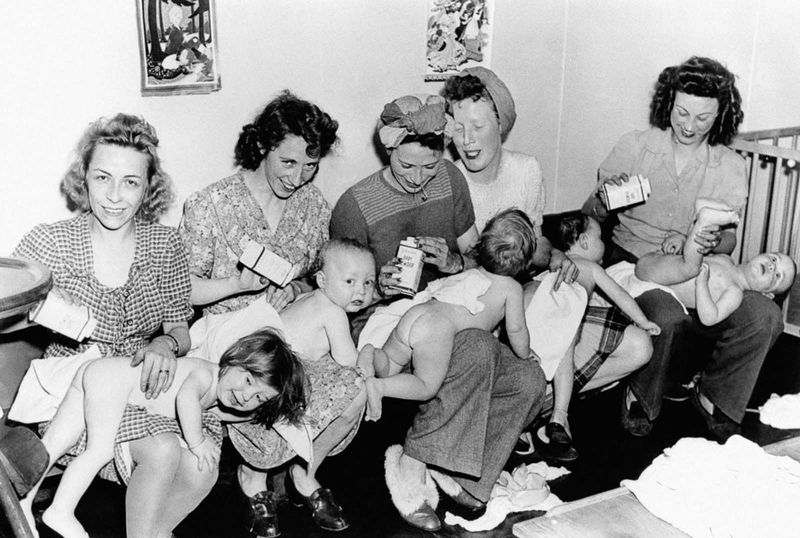
The Baby Boom of the 1950s was like nature’s encore, following the end of World War II with a crescendo of cradles and carriages. Suburban streets echoed with the laughter of children, as playdates and playgrounds became the norm.
These post-war offspring were more than just a demographic surge; they were the heralds of a new era, a generation raised amidst prosperity and promise. Change was in the air, and these babies were at the heart of it.
Parents embraced the joys and challenges of raising larger families, and the boom left its mark on everything from housing to education. It was a time of optimism and abundance, as each baby’s cry was a note in the symphony of a bright future.
17. Suburbanization Booms

The 1950s saw the suburbs blossom like daisies after a spring rain, as families flocked from city centers to the comfort of picket-fenced paradises. Suburbanization wasn’t just a trend; it was a lifestyle revolution.
Communities like Levittown symbolized the promise of a fresh start, a place where the American Dream was neatly packaged in rows of identical houses. These neighborhoods were the backdrop for backyard barbecues, carpooling, and cookie-cutter camaraderie.
Suburban life offered a sense of security and space, a shift from the urban hustle and bustle. It was a time when homeownership became synonymous with success, and the suburbs were the canvas on which families painted their futures.
18. Barbie is Launched (1959)
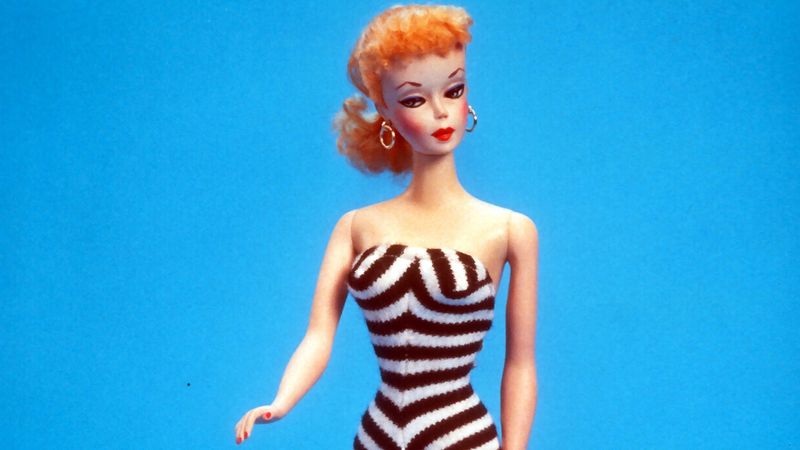
In 1959, the toy world got a glamorous makeover with the launch of Barbie, the fashion-forward doll that became an instant sensation. She was more than just plastic and fabric; she was a symbol of style and possibility.
Barbie wasn’t just a toy; she was a cultural phenomenon, offering little girls a chance to dream big and imagine themselves in a myriad of roles. From astronaut to doctor, Barbie wore many hats, inspiring generations to reach for the stars.
Her arrival marked a shift in how children played, encouraging creativity and ambition. It was a time when the toy box expanded, and Barbie became a household name, strutting her way into the hearts of millions with every stylish step.
19. Playboy Magazine Debuts (1953)
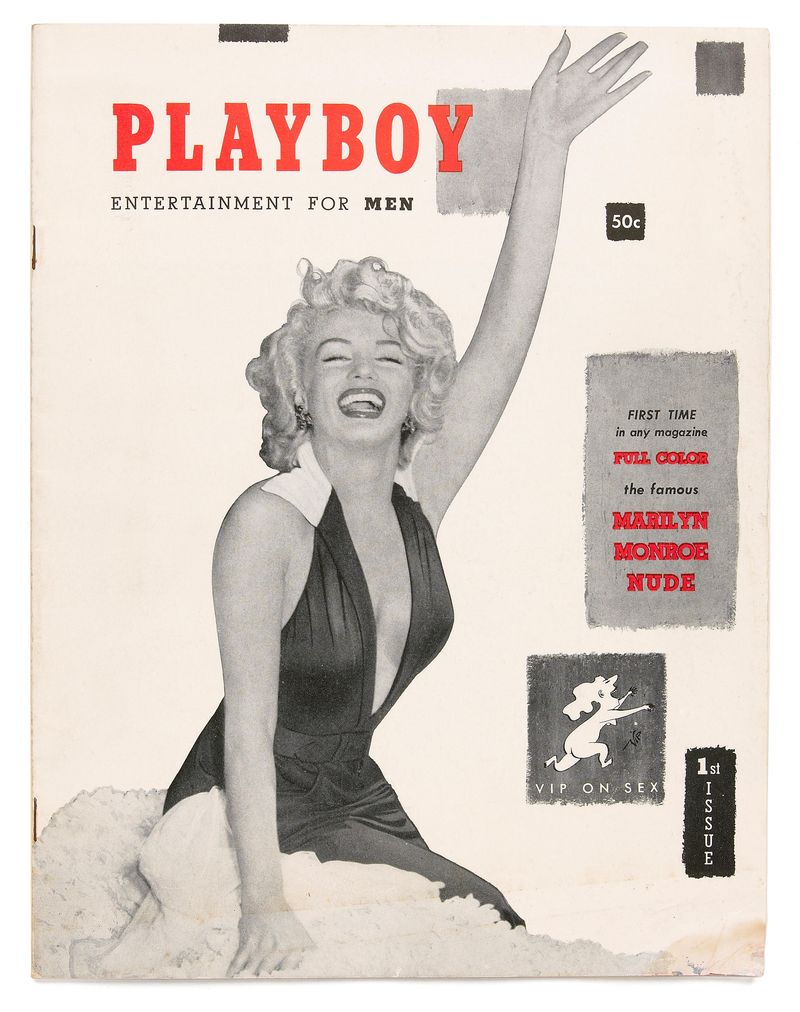
In 1953, Playboy Magazine made its seductive debut, turning heads and pages alike. With Marilyn Monroe gracing the first cover, the magazine wasn’t just about glossy photos; it was a cultural statement.
Playboy offered more than a peek into the glamorous and provocative; it provided a platform for progressive ideas, pushing the boundaries of social norms. It was an invitation to explore the avant-garde, wrapped in sophistication and allure.
The magazine became a symbol of the changing attitudes towards sexuality and freedom, sparking conversations that resonated beyond its pages. It was a time when the printed word met provocative imagery, challenging conventions and celebrating the art of allure.
20. Disneyland Opens in California (1955)

In 1955, dreams and fairy tales found a permanent address as Disneyland opened its doors in sunny California. It was more than an amusement park; it was a magical kingdom where fantasies came to life.
Families flocked to this wonderland, where castles and characters made imaginations soar higher than a Dumbo ride. Disneyland wasn’t just an escape; it was a new frontier of family entertainment, where every visit promised joy and adventure.
With each ride and attraction, Walt Disney’s vision of a place where happiness was an everyday affair became a reality. It was a time when whimsy and wonder stepped into the spotlight, and Disneyland set the standard for theme parks worldwide.
21. Polio Vaccine Developed by Jonas Salk (1955)
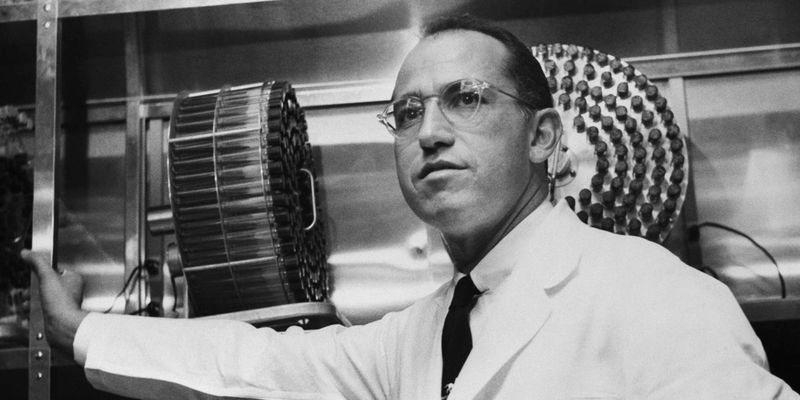
In 1955, Jonas Salk became the hero of the playground when he developed the polio vaccine, a breakthrough that turned the tides in the battle against this crippling disease. It was a scientific symphony of hope and healing.
Parents breathed a collective sigh of relief as the vaccine rolled out, offering their children protection from a fearsome foe. Salk’s discovery wasn’t just medicine; it was a miracle, a testament to human ingenuity and perseverance.
This medical milestone marked a turning point in public health, paving the way for future innovations and instilling a renewed faith in science. It was a time when the laboratory became a beacon of hope, and Salk’s vaccine saved countless lives.
22. Nuclear Power Plant Goes Online (1958)
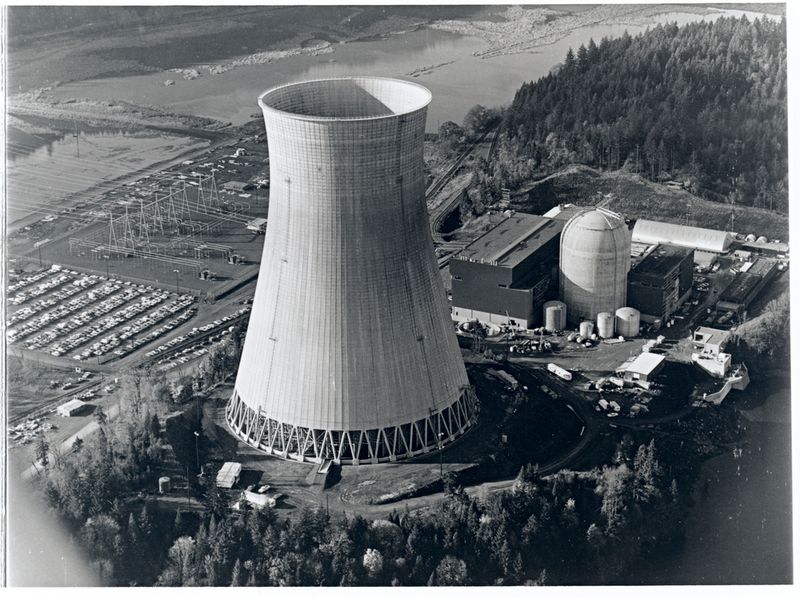
In 1958, the nuclear age glowed a little brighter with the opening of America’s first commercial power plant in Pennsylvania. It was a quiet revolution, where atoms promised a new era of energy.
The plant wasn’t just about electricity; it was about harnessing the power of the universe, making the once-unimaginable possible. Engineers in their white lab coats were the new pioneers, exploring the frontier of nuclear energy.
This technological triumph was more than just a power source; it was a testament to innovation and progress. It was a time when the future seemed limitless, and the atom held the key to a brighter tomorrow, illuminating the path to modern energy solutions.
23. Launch of Sputnik by USSR (1957)

In 1957, the Soviet Union launched Sputnik, a beeping ball of metal that signaled the dawn of the Space Race. It wasn’t just a satellite; it was a cosmic wake-up call that echoed across the globe.
Americans gazed skyward, their imaginations ignited by the possibilities of space exploration. Sputnik’s journey was more than just orbiting the Earth; it was about inspiring a generation to reach for the stars.
This orbital achievement spurred scientific advancements and sparked a competitive spirit, as the U.S. raced to catch up. It was a time when the final frontier felt a little closer, and the world marveled at humanity’s first steps into the cosmos.
24. NASA is Founded (1958)

In 1958, the stars aligned as NASA was founded, marking America’s official entry into the space race. It was more than an organization; it was a symbol of ambition, scientific curiosity, and exploration.
The team of scientists and engineers who assembled at NASA were the vanguards of a new era, ready to tackle the mysteries of the universe. Their endeavors promised to push the boundaries of what was possible, one launch at a time.
NASA’s creation was a testament to human ingenuity, setting the stage for remarkable achievements in space exploration. It was a time when the sky was no longer the limit, and the quest for knowledge knew no bounds.
25. Color TV Begins Broadcasting
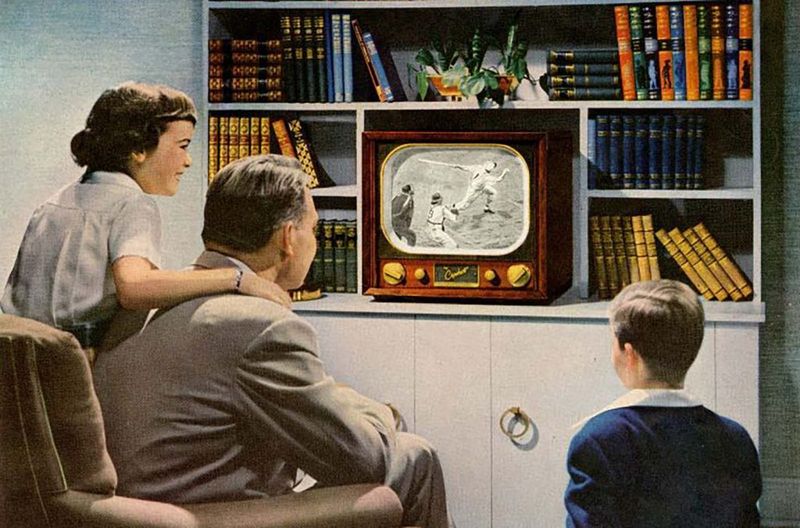
The mid-1950s saw the dawn of color television, turning black-and-white broadcasts into vibrant displays of hues and shades. It was a technological symphony that changed the way stories were told and experienced.
As families gathered around their sets, the world seemed a little more colorful, a little more alive. The magic of color brought new dimensions to storytelling, capturing imaginations and elevating entertainment.
This shift wasn’t just about visuals; it was about redefining the viewing experience, making television more engaging and immersive. It was a time when technology painted a new picture of the world, one rainbow at a time.
26. First Credit Card (Diners Club, 1950)
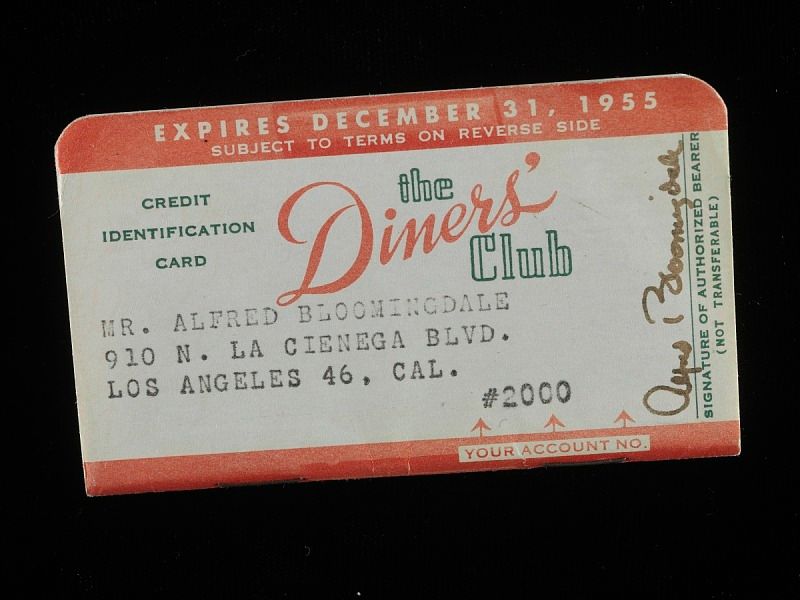
In 1950, the Diners Club introduced the first credit card, a plastic revolution that changed the way people paid for dinner—and everything else. It was a financial innovation that promised convenience in a wallet-sized package.
The card wasn’t just a payment method; it was a status symbol, a sign of modernity and sophistication. As businessmen dined and dashed—legally—their wallets got a little lighter, but their financial freedom expanded.
This invention laid the groundwork for consumer credit, setting the stage for a world where plastic would become king. It was a time when the world of finance turned a new page, offering consumers a taste of the future with every swipe.
27. Rosa Parks Arrested (1955)

In 1955, Rosa Parks took a stand by taking a seat, sparking the Montgomery Bus Boycott and lighting a fire under the Civil Rights Movement. Her act of defiance wasn’t just about a seat on a bus; it was about a seat at the table of equality.
Parks’ quiet courage resonated with a nation ready for change, as her arrest became a rallying cry for justice. Her story was more than an incident; it was an inspiration, a testament to the power of individual action in the face of systemic injustice.
The boycott that followed was a testament to the strength of unity and perseverance, a peaceful protest that moved mountains. It was a time when one woman’s resolve helped steer the course of history, proving that change is driven by those who dare to sit firm.
28. Little Rock Nine (1957)
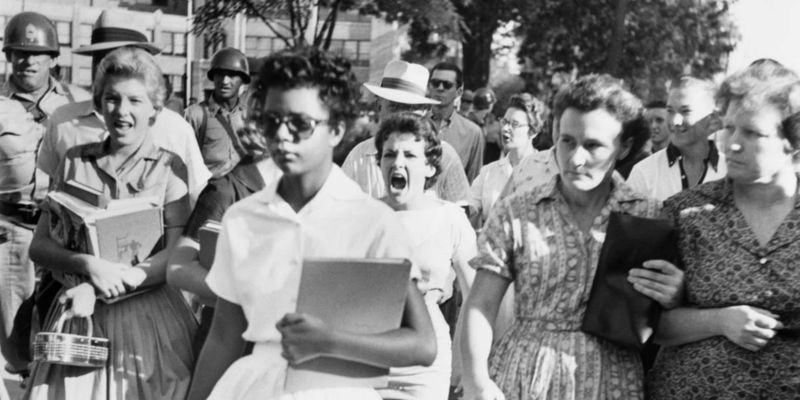
In 1957, the Little Rock Nine weren’t just students; they were pioneers, bravely integrating Central High School under the watchful eyes of federal troops. Their daily walks to class were lessons in courage and resilience.
These teenagers faced hostility and hate, yet they carried themselves with dignity, their presence a powerful statement against segregation. Each step they took was a stride toward equality, a march that echoed through the halls of history.
Their courage inspired a nation to question the status quo, becoming a pivotal moment in the Civil Rights Movement. It was a time when education became a battleground for justice, and the Little Rock Nine stood as beacons of change.
29. Emmett Till’s Murder (1955)
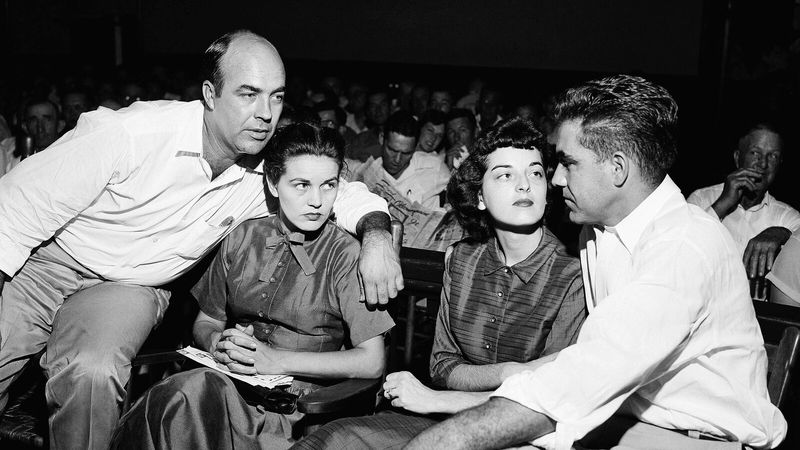
The murder of Emmett Till in 1955 was more than a tragedy; it was a catalyst that shocked the nation and fueled the Civil Rights Movement. His story was a painful reminder of the harsh realities of racial injustice.
As the trial unfolded, the world watched, and the courtroom became a stage for justice—or the lack thereof. Till’s death wasn’t just a loss; it was a rallying cry for change, highlighting the urgent need for civil rights reform.
The outcry resonated across the country, galvanizing activists and prompting conversations about race that could no longer be ignored. It was a time when a young boy’s tragic fate became a turning point in the fight for equality and justice.
30. NAACP Gains National Attention
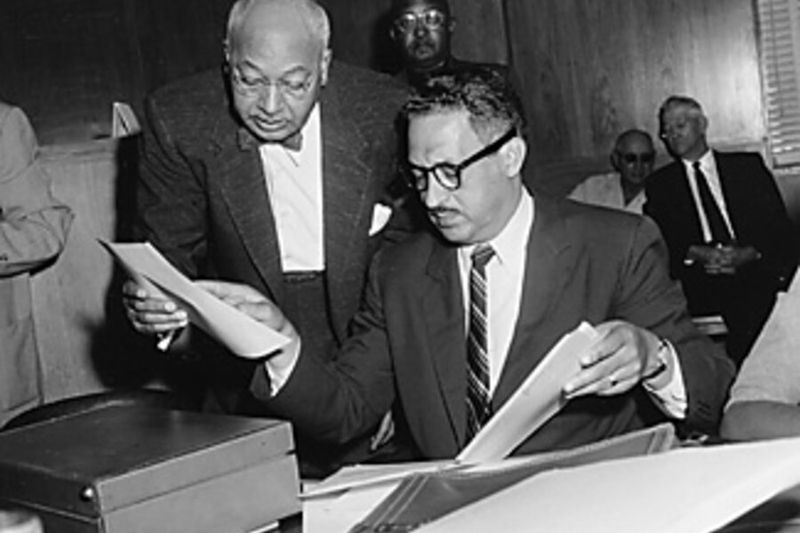
The NAACP’s journey to national prominence in the 1950s was a testament to the power of perseverance and advocacy. Under the leadership of figures like Thurgood Marshall, the organization became a beacon of hope for civil rights.
Marshall’s eloquence and legal acumen were instrumental in landmark victories, as he championed cases that dismantled segregation piece by piece. The NAACP wasn’t just an organization; it was a movement, a collective voice demanding justice and equality.
Their campaigns and court battles were more than just legal challenges; they were moral imperatives, calls to action that reshaped the nation. It was a time when the NAACP stood at the forefront of change, leading the charge toward a more just society.
